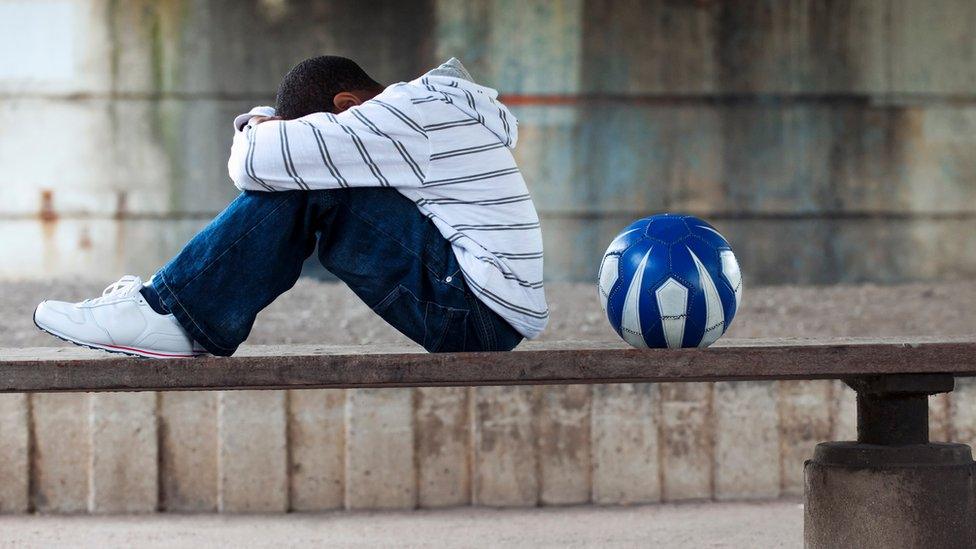Europol shows clues from child abuse images to track offenders
- Published

One detail from an image shows a mystery house through some snow-covered trees
Europe's police agency has launched a new webpage that displays objects in child sex abuse images to try to find the perpetrators and victims. Europol hopes details like a logo on a bag or a shampoo bottle may alert someone who can then contact police by an anonymous tip-off or social media, writes the BBC's Anna Holligan in The Hague.
Tens of thousands of paedophiles are involved in abusing children and distributing the photos and videos online.
Tools such as live-streaming have increased the ways in which the vulnerable are exploited.
Europol wants to harness the global digital reach to capture those creeping behind the cameras.
Investigators call it crowd-knowledge sourcing.
"We have eyes and ears across the whole world," explains Steven Wilson, the Scotsman who heads up Europol's cyber crime unit.
"These are normally secretive types of investigations. But we have exhausted all our leads, so this is a last resort. We need the public to help us collect pieces of the jigsaw puzzle."
Pictures flash up on the screen inside a high-security ops room.

Another image shows a plastic bag with distinctive logo
Most of the material the cyber-detectives seize is too disturbing to share. They have chosen two photos, each blurred to obscure the child's identity, to demonstrate how the mundane items appear in the scenes of abuse.
The first shows a young girl wearing a multi-coloured jumper. Her bottom half is bare and exposed to the camera. She is being groomed to take graphic pictures of her genitals.
In the shot you can see a plastic shopping bag. The webmasters have zoomed in on the logo and shared it on the website, in the hope someone will recognise it.
Wil Van Gemert, deputy executive director of Europol's operations department, says: "We're not just talking about family members or a neighbour, but if someone can tell us which country it comes from, there's our lead."
Twenty images at a time will go up on the website, Stop Child Abuse, external. The first selection includes a ram or unicorn logo on a tiny blue and white polo T-shirt, an orange pamphlet, a medicine bottle behind a baby lying on a changing mat.
Calculated risk
Each photo has an option underneath to send an anonymous tip to Europol or share on social media. The detectives want users to realise the potentially vital role they can play, they believe a few clicks could help to rescue a child.
Past experience has shown a background object can provide a breakthrough.
In one case, Steven Wilson tells us: "There was a trampoline in the garden. We zoomed in and saw a manufacturers' mark. They told us it was only sold in one country - that led us to the right area, and eventually, the suspect."
The officers are aware there is a danger that the perpetrators will spot their pills or their victim's pyjamas and flee before police can reach them.
But they say it is a calculated risk, and the shots have been cropped to remove the sickening evidence of their crimes against children.
This is a pilot project. Europol is hoping to replicate the success of its "Most Wanted" campaign - 35 of the 50 suspects featured online have been apprehended, 11 thanks to tip-offs from the public.
But they say this website is not just about solving cases. It's about saving the children.
- Published29 July 2016

- Published21 June 2016

- Published27 May 2015

- Published15 January 2014

- Published11 December 2014

- Published5 February 2013
